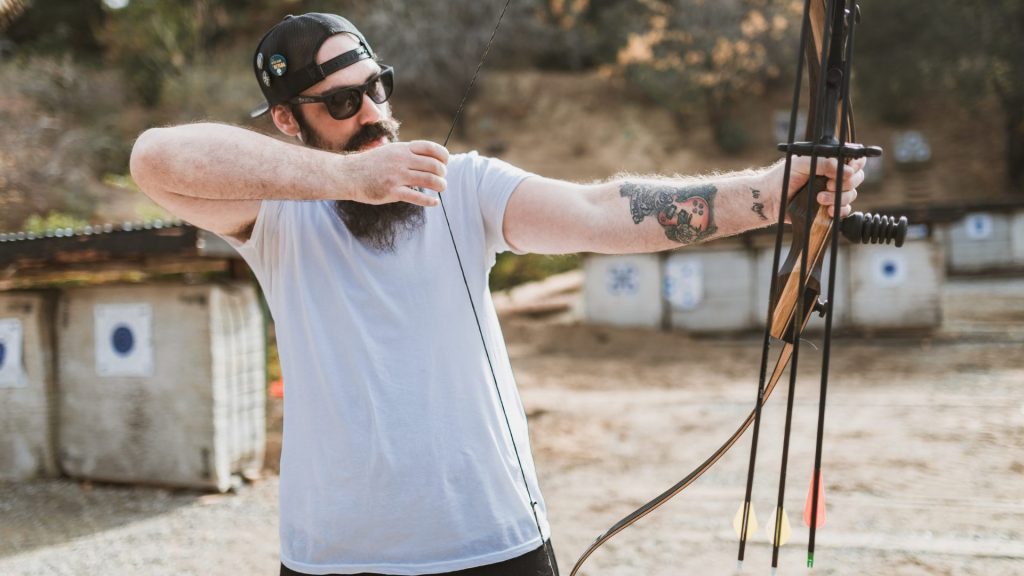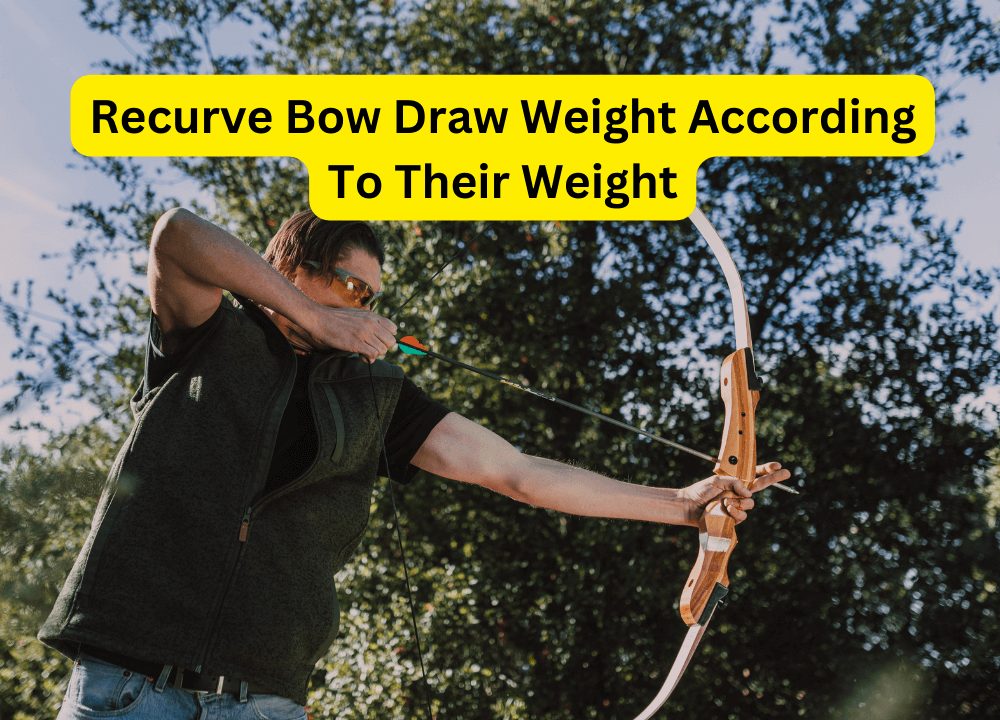
Stringing a bow is one of the most basic yet sometimes disregarded parts of being an archer. This article examines several stringing techniques used in the history of archery. You will learn to string a traditional or modern compound bow. You will also learn how to string recurve bows.
With the right tools, stringing a bow is easy. To prevent hitting oneself with a bow limb demands attention and caution. Like stringing a bow, unstringing a bow is an aspect of archery as it may damage a bow.
Always use a bow stringer tool to string your bow to maintain your bow’s guarantee!
Stringing a bow is one of the components of using a bow. However, some people could be shocked to learn they have been performing it incorrectly, as with many other aspects of archery.
Methods to String a Recurve Bow
Suppose you are a beginner, archery lover, or need to learn how to string a compound or takedown recurve bow with or without a stringer tool. In that case, this article will provide you with information to make you enjoy archery. This article will make your day.
You need to string your bow if you’re new at archery. When utilizing a recurve bow or longbow, an archer must acquire the fundamental technique of stringing a recurve bow. An archer must know after shooting, removing the bowstring might help your equipment last longer.
1. String a Recurve Bow Using Stringer Tool:
Put the string onto the bow before using the bow stringer. The top of the stringer often has a larger loop. Slide this end of the bowstring down the limb. Slide the other looped end of the string over the bottom limb tip. Now, position the bow stringer’s top over the groove of the top limb. If it’s a saddle, clip it below the string. Then, place the bottom of the bow stringer over the bottom limb’s tip.
Now place the bow horizontally on the bow stringer, Step. What seems most comfortable, you can put either one or both feet on the string.
It would be advisable to favor a broader posture if you are a little man. Pull the bow up with one hand. Next, stoop down and raise the string until it slides over the bottom tip. Remove the bow stringer. Make sure the bowstring is well-inserted in the limb groove.
2. How to Unstring a Recurve Bow Using Stringer Tool:
To begin, position the pocket over the bow’s bottom limb. Choose the bigger pocket if your bow stringer has two. The pocket should slip over the limb of the bow completely.
You will now carry out the identical action on the opposite end. Use the additional pocket if your bow stringer has one. If it has a saddle, you’ll wrap the end of it over the top limb of your bow before resting the pad on the curve just below the string’s nock. It may be necessary to keep applying pressure to this end, depending on your bow stringer.
Grab the bow’s middle, towards the upper limb, using your strong hand. With your other hand, grasp the handle in the middle. The bowstring should be parallel to the ground and facing forward.
Once the stringer’s cord and not your bow string is lying on the ground, lower the bow until it is. Step down firmly on the stringer’s cable while keeping your feet shoulder-width apart.
Pull the bow slowly back up until you are upright or the bowstring is slack. Remove the upper limb’s loose string by sliding it. On the lower limb, repeat the process.
Lastly, drop the bow to release the tension while keeping both feet positioned on the stringer’s rope.
How to String a Recurve Bow Without Using a Bow Stringer
There are two methods: push, pull, and Step through.
1. Push & Pull Method To String a Recurve Bow:
The top loop crosses the top limb tip, and the bottom loop partially traverses the bottom limb. Press the bottom limb tip by the inside of the foot. Hold the grip with one hand and the top of the bow with the other. Pull the grip in your direction and push the bow away from you to tighten the bow. Slide the loop over the tip as you pull the limb. Release the tension after it is seated in the groove, and inspect both ends.
To unstring a bow, repeat the above process with the difference you need to pull the loop down.
2. Step Through Method:
Step between the string and the bow. Place the bottom limb across the front of the back leg. Pull the bow close to you. Tighten the bowstring with your hand. To the tip of the upper limb, raise the string. Check out that the bowstring is correctly seated in the grove.
To unstring a bow, step through, pull the limb towards you, and slide the string down.
How to String a Compound Bow
1. How to String A Non-Tear Drop Compound Bow Using A Bow Press
Position your compound bow correctly on the bow press. As you work on the bow, it remains secure and sturdy. Whether or not to use a bow press depends on the bow manufacturer.
Before mounting the bow on various bow presses, you must remove the restraining bolts from the bow. The tool attachments of additional bow presses enable you to loosen the bowstring.
Alternately turn each restraint bolt by the same amount each time. Depending on the specific bow, slackening the bowstring should take three to seven turns.
On these types of bows, we cannot change the strings using the teardrop attachments; instead, we must utilize the cams and wheels. Once loosened, carefully slip out the string by unhooking it from the tubes in the middle of your cams.
Reverse the previous Step with the other bowstring. Hook the first end loop of the bowstring onto the middle stem of the cam. Thread this loop through the second cam on the other side. In the end, hook the other end loop onto the centre stem of the cam. On some compound bows, the second end of the bowstring has one cam; attached to a wheel at the opposite end of the bow.
For tightening the restraint bolts of the compound bow, repeat Step three in reverse, after which you should decouple the compound bow from the press. Check that the new bowstring is held tight in the appropriate slots of the cams or wheels.
2. How to string a Teardrop Compound Bow Using A Bow Press
Position your compound bow correctly on the bow press. Before mounting the bow on various bow presses, you must remove the restraining bolts from the bow. Alternately turn each restraint bolt by the same amount each time.
When using the teardrop attachment, leaving the old bowstring in place while putting in the new one is necessary. It helps shield the bow against an unexpected release of stress. Attach the end loop of the new bowstring to the teardrop’s second notch. The first notch ought still to have the original bowstring on it.
Complete the same process using the second teardrop attachment on the other side of the bow. The new bowstring should now have both end loops attached. Make it clear that the ends of the bowstring are tightened and not sliding off the notches.
From its notches on the teardrop attachments at either end of the bow, unhook the old bowstring. Retighten the bow’s restraint bolts, then take it out of the press.
Frequently Asked Question
Using a bow press is the simplest method for stringing compound bows. We can string certain types of bows by hand.
At the first knuckle of the first three fingers, wrap the string around them. Do not crush the arrow; hold it loosely between the index and middle fingers. The right hand’s thumb and little finger should be in contact with the palm. It’s crucial to maintain a straight right-hand back.
A set of cables and bowstrings should last two to three years with typical use and good maintenance.
Overall, all strings are best, but Sinew (animal tendon) or animal intestines is the best out of all other recurve strings.
Best One Method To String a Recurve bow: The Final Remarks
The push and pull method is easy and convenient if you use a lighter bow or low draw weight.
Step through method is useful if you use a heavy bow or large draw weight, but it is the least safe among the three methods. The reason is uneven tension in the limb.
Doing it again and again wrong will warp the limbs and render them unusable. It will not happen in the case of cheap fiberglass or carbon limbs. But traditional and wooden limbs are more prone to it.
Practice using the bow press method to string and unstring a compound bow.




